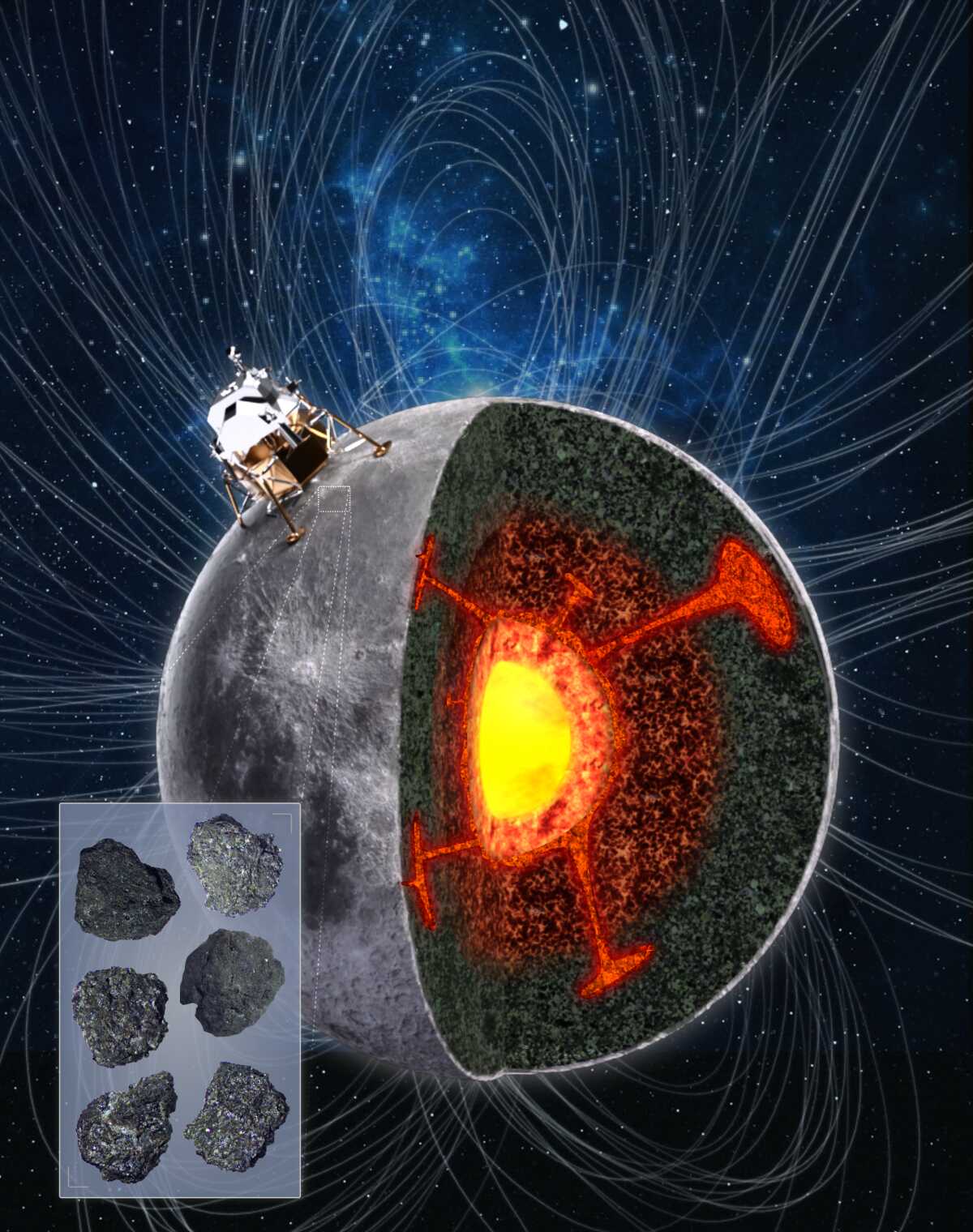Understanding the strength, structure, and evolution of the Moon's magnetic field is crucial for unraveling its internal structure, thermal history, and surface environment. To date, most of our knowledge of the ancient lunar magnetic field has been derived from Apollo mission samples, which focus primarily on the Moon's early history, particularly older than 3 billion years ago. However, much less is known about how the lunar magnetic field evolved during the middle to late stages of the Moon's history, leaving key questions about whether the Moon sustained a long-lasting magnetic field, or "dynamo," still unresolved.
The Chang'e-5 mission returned the youngest lunar basalt samples from Oceanus Procellarum, a region at mid-latitudes on the Moon. These rocks offer a rare opportunity to investigate the Moon's magnetic history during its middle age. Prof. Zhu Rixiang, Associate Professor Cai Shuhui, and their colleagues at IGGCAS, in collaboration with researchers from the National Astronomical Observatories of the Chinese Academy of Sciences (NAOC) and China University of Geosciences (Wuhan), conducted a detailed magnetic study on these Chang'e-5 basalt samples. Their results reveal that the Moon possessed a weak dynamo magnetic field, around 2–4 microteslas, approx. 2 billion years ago. This finding significantly advances our understanding of the Moon's magnetic evolution and indicates that the lunar dynamo persisted at least into the Moon's middle age.
The study also suggests that thermal convection within the Moon's deep interior may have continued during this period, providing additional heat for volcanic activity late in the Moon's history. Furthermore, the weak magnetic field detected in the Chang'e-5 samples implies the presence of a protective magnetic shield, or "paleomagnetosphere," at that time, offering important insights for studies of space weathering and volatile materials on the lunar surface during the Moon’s midlife.
This research was published as a cover article in Science Advances on January 2, 2025. The same issue of Science Advances features a focus article on this paper by Professor Benjamin P. Weiss from the Massachusetts Institute of Technology (MIT, United States). This study was supported by the National Natural Science Foundation of China (NSFC) and the Chinese Academy of Sciences (CAS).

Figure 1: The Chang'e-5 basalts reveal a weak lunar dynamo magnetic field 2 billion years ago, indicating that the Moon's interior still retained some level of activity during the midstage. (Image by IGGCAS)
Contact:
CAI Shuhui
Center for Lithospheric evolution, Key Laboratory of Lithospheric and Environmental Coevolution, IGGCAS
Email: caishuhui@mail.iggcas.ac.cn